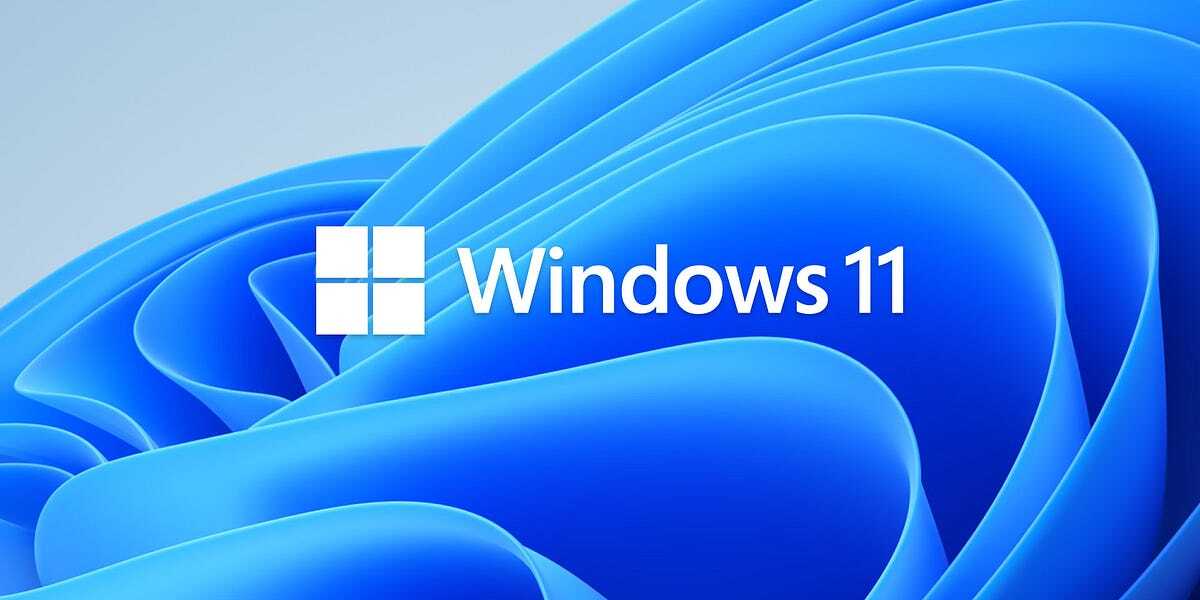Honestly, between the telemetry data collection, the strange hardware requirements, advertisements, bloatware, and unknown future licensing model, Linux is looking like an attractive option. At this point, I only use Windows for Office and gaming, and Linux + Proton has gotten really good lately. I don’t see a reason to use Windows on my personal machine any more.
We don’t use the word “Spyware” like we did twenty years ago. It’s baked into Windows now.
Linux is fine for people like you and me who are comfortable installing our own operating system, and trouble-shooting any problems. Most ‘normal’ people though will continue to walk into a store, buy a laptop, and use whatever came installed.
Of course, the year of Linux on the desktop actually happened some time ago without anyone noticing. It’s called ChromeOS, and that’s a whole different can of worms.
While true, how much troubleshooting does windows require? Because as I sometimes use windows, it’s not that much less work to get it to do what you want it to do, or solve issues, than linux.
Especially since it feels like windows tries to fight you every step of the way.
Most distributions require little to no troubleshooting, and if they do, someone has probably already posted the solution online. It’s pretty rare these days that you run into a problem that someone else hasn’t and you’re stuck figuring it out yourself.
The only pain point is trying to find the Linux equivalent of the Windows apps that you commonly use. Web browsers are the exact same, but that’s about it. A fair amount of apps to offer Linux counterparts though.
When windows needs fixing, people take it to the best buy genius bar or whatever
deleted by creator
you don’t, normal people take their shit to the best buy when it’s broken
While true, how much troubleshooting does windows require?
A surprising amount
It depends on ehat youre trying to do. If you are teying to debloat it, of course you go out of your way, but it has the reverse problem for most drivers, where youre almost guaranteed to plug in an arbitrary USB device, and itll probably have drivers or software in the windows environment.
Linux is great. With the caveat that you specifically pick hardware that works well in Linux for it, else you have the problem of “a choice fighting you every step of the way”
Linux is easily fixed but the problem is that the issues that crop up needing to be fixed are generally not pain points on Windows. The first Arch install I did this year was busted and I thought I had broken my networking setup because it wouldn’t connect, but the issue was that the system clock was wrong. Something like that may pop up in Windows but you can quickly press the sync time and date button in the settings and it’ll sort itself out, while Arch requires a lot more work than just that, especially if it has no connectivity.
…I’ve certainly had that issue on windows as well. I had to manually set the time. Windows sync at least didn’t use to always work.
I’ve been using Linux for like 15 years and Arch for about a decade. I’ve never had an issue where the system time prevents the network connection from working. That’s odd.
It makes sense because all of our cryptography is based around time limits. If the system time is way off it can’t verify the cryptographic signatures and it’s not going to validate any certs since the time doesn’t line up properly.
Yeah, true.
Every distro has ntp setup by default. New users shouldn’t use Arch…
Yeah and old users shouldn’t be fucking snobs, yet here we are.
Once people get over the initial Windows indoctrination, Linux is simple to use and doesn’t require tons of complex troubleshooting like people think. Before the COVID lockdown I tried for the Nth time to get my dad to use Linux. I had it installed and told him to stick with it for a few weeks (he only browses the web and plays solitaire). If he still didn’t like it, I’d reenable Windows. Well that few weeks turned into 6 months. Now both he and my mom have been happy Linux users for about 2 years.
If I may ask, how do you deal with updates? Have you enabled unattended upgrades or do you update the machines yourself?
His dad just needs to put a password when asked. It’s a 6-years-old kid task updating on most Linux distro.
That would be true if:
- A GUI software center is used (or if the said dad is comfortable with an interactive console application)
- The said dad actually realizes the importance behind updates. From my experience, many people don’t.
So, unless both of above are true, the dad will never (want to) update his system because “it works as is”, sticking to old versions of software, never receiving bugfixes and neglecting security.
Most distro nowadays come with a gui to update. A pop up window appears asking if you want to update/upgrade. You can press “yes” and the password of the sudoer or admin user is asked. It has been like this for over a decade. For popular distros as Ubuntu or fedora over 15 years
Is it different for your distro?
He still doesn’t care to.
Yes, probably because I stick with Arch and Slackware plus a lightweight environment. The only time I saw such a GUI was when I tried out Elementary just for fun.
What I consider a problem is that the user can simply dismiss or disregard the updates notification indefinitely. I know many non-tech-savvy people who do not understand the importance of updates, so they would be inclined to do exactly that. That is why unattended upgrades are probably a better option in such cases.
You’re a wise (wo)man. That is exactly the case. I’ve shown him how to do it in the GUI but he doesn’t care to because, like you said, “if it ain’t broke, don’t fix it”.
Thank you for answering. I can relate to manually updating my parents’ systems once in a while but at this point I’m seriously considering unattended upgrades (updating over SSH is also a good idea).
His own password which makes it even simpler.
I do it for them whenever I come over every month or two (I live out of state). I could also just SSH in and do it remotely if I really wanted to. I showed my dad how to do it with the GUI package manager, but he’s the “if it ain’t broke, don’t fix it” type. Linux will run perfectly fine without updates for years.
I’m not the guy you asked, and I hope he responds because I’d like to hear his answer too, but a lot of that depends on the Linux distro you select. On rolling releases you get continuous updates automatically, not major upgrades like forced Windows Updates.
I’m OP, he runs Manjaro and I handle the updates whenever I see him, every month or so (I live out of state). I could do it over SSH but if something happens to break, it’s a pain to fix. I showed him how to do it in the GUI but he doesn’t care to do it.
What do you mean, automatically? Arch is a rolling release and I have to explicitly run
pacmanwith the correct flags to update. At the same time Debian, which is not a rolling release, has the unattended upgrades feature which installs updates automatically.But indeed, many things depend on the distro. For example, user-centric distros such as Elementary and others provide an easy to use GUI for updating the system.
And yes, Windows Updates was (is still? not a Win user) a nightmare.
What do you mean, automatically? Arch is a rolling release and I have to explicitly run
pacmanwith the correct flags to update. At the same time Debian, which is not a rolling release, has the unattended upgrades feature which installs updates automatically.I was thinking Tumbleweed, Manjaro and the like which have GUI updaters, lol. @pete_the_cat@lemmy.world was pretty clear that his parents are the ultimate Linux beginners; he’s not going to give them Arch or Debian out of the box and bark command lines at them.
I actually have given him Arch before, but I handled everything. They’re running Manjaro.
When people are talking about Linux Desktop they usually mean GNU/Linux. Chrome OS and Android both use the Linux kernel, but they aren’t GNU/Linux like we understand Linux desktop.
GNU/Linux needs a company that will create a Macintosh equivalent. A company that will design quality hardware. Restrict the hardware they support tightly, but highly optimise the drivers in their devices. Selling their equipment with a distro that’s well supported with bug testing and user support. Each update being tested on all their devices.
This would allow people to buy their devices without much thought.
I think people in the past thought this could be Ubuntu and Canonical. But their business is server, so there desktop will never get to the place it needs to be.
The steam deck is pushing Linux closer to this place. But I don’t think it will be enough.
As sadreality said, you’re describing System76.
System76 aren’t there. They sell rebranded ugly generic laptops with low quality screens. They sell them for a similar prices to low end macbooks. You put the average person in front of both in a store and they are going for the macbook. Better screen, better battery life and good quality hardware.
PopOS has the best chance to be ‘the Linux’ desktop. But they need nicer hardware. System76 are selling laptops to Linux people, that’s their market. They don’t have nice hardware design to compete in the high end of the market. And they aren’t cheap enough to compete in the low end.
System76 are also going after the server market. I suspect they will go the way of Ubuntu. Chasing the server market and being too distracted to follow through with their desktop ambitions.
Tell us how you really feel. xD
I wouldn’t call System76’ hardware ugly. It’s generic looking, sure, but it’s not ugly. It’s also designed by them. They used to only customize OEM systems with their own designs, but they started designing and manufacturing their own desktops a few years ago. Their first fully self designed and manufactured laptop is coming out soon. They have never just rebranded other companies’ designs though, so that’s just flat out wrong.
Their screens are fine. Have you seen them? They’re nothing to write home about, but they’re not low quality.
They have a range of laptops from $999 to $3,299, so I’m not sure what you mean when you say they’re a similar price to a low end MacBook.
They are very much not abandoning their desktop ambitions. They are putting a lot of effort and investment into their own desktop environment.
There is no company that designs all their PC hardware and all their software. Not even Apple does (but they’re probably the closest). Everyone has suppliers they work with for stuff they don’t want to design or build.
Dell and Lenovo sell Linux laptops.
To add to that, Android is likely the overwhelming market share of Linux-based operating systems in use today. For that matter, an absolute ton of Intel CPUs have Minux installed on them too, but I wouldn’t call this “on the desktop”, just interesting.
Imagine sounding this elitist because of an operating system you use
Until you realize that many orgs have software that only works on windows.
Its not a great situation
Storage is super cheap these days. Just buy an extra hard drive for Windows and boot into that on the rare occasion you truly need to use Windows. Or just use a VM.
You could just use a VM or put on the same disk. There is no reason to spend extra money
Windows has a bad habit of fucking up Linux boot partitions when it updates, so proceed with caution if you decide to keep them on one disk.
I’ve never had an issue
That’s great for you. Doesn’t mean the issue doesn’t exist, though.
I’ve worked as a SWE at Facebook, Google, and LinkedIn, and none of the devs I worked with used Windows. Everyone either used Mac or Linux. It’s just a matter of time before the dev world bleeds out into the consumer world.
We’re a Mac shop here, but almost everyone I know still runs windows on their desktops. The few who don’t are on MacBooks and don’t have desktops.
Linux is still a minority, even among developers
Edit: I should probably clarify I mean personal desktops, not work provided.
At LinkedIn everyone had a Linux desktop that matched the server environment. Very few people actually coded on their desktop though. Most of us used a MacBook then either tested on the desktop or tested on a dev server.
At Google, almost everyone used a MacBook or their Goobuntu desktop (Google’s custom version of Ubuntu). Basically everyone would remote into their desktop to write code. Some people used Windows and some used Chromebooks.
At Facebook, most used MacBooks, the rest were pretty evenly divided between Windows and Linux (on Thinkpads). Everyone had a Linux dev server in one of the data centers to test on.
At every one of these places, the production environment is 100% Linux, so eventually, everyone had to test their code on Linux (except mobile or desktop app developers).
Again, I never worked with anyone who used Windows, but I knew there were some people who did, cause they would stick out.
Should probably clarify that I meant their home PCs, not work provided ones. Our dev is all done on Mac and then we have remote Linux dev environments for testing if needed.
Windows for development is asinine, can definitely agree there. But for home computing it still isn’t taking over.
Corporations have access to a version of windows that doesn’t have telemetry, advertisements or bloatware. Its called Enterprise Edition.
That comes at a cost premium
Cost wasn’t mentioned in the original scope. OP was saying he hates the telemetry, ads, etc. and then you stated that companies have software that needs windows to run, to which I stated that there is a version that doesn’t have OPs concerns and runs custom apps that companies use.
I was actually speaking from personal experience but I see your point
The subscription rumor was debunked pretty quickly. I honestly don’t see that happening anytime soon, PC makers would get pretty upset (especially if they don’t get a cut of the revenue).
deleted by creator
Yes, that’s reporting on the “leak” from Neowin, which Neowin later redacted because there wasn’t actually enough evidence: https://www.neowin.net/news/microsoft-might-want-to-be-making-windows-12-a-subscription-os-suggests-leak/
Windows 365 is a cloud streaming PC that isn’t even available to consumers yet.
deleted by creator
The original source for that is an internal presentation with poorly-worded language that said Windows will “move” to the cloud, the whole presentation slide makes it clear they’re talking about Windows in the cloud as an option: https://www.theverge.com/2023/6/27/23775117/microsoft-windows-11-cloud-consumer-strategy
Forcing everyone to stream Windows from a cloud server would not work well for the vast majority of PCs and internet connections. Microsoft isn’t dumb, they’re not going to try that and lose even more market share to Apple. I was linking to the article to show the correction, the original article was junk based on nothing and shouldn’t be taken seriously.
deleted by creator
Do it. I only use Windows to play my heavily modded copy of Skyrim and now Starfield. Everything else has been Linux for years.
I have been playing both of those on proton with little issue, and I’m not positive that the issues I experienced are exclusive to linux.
Using ModOrganizer2 to launch a Windows game from Steam using Proton is a massive pain in the ass, I’ve tried to set it up a few times before. I finally got it to work correctly, where it would actually run the game with ENB, and I was getting 15 FPS on an RTX 2080 Super and Ryzen 7 5900.
Also trying to get all the other programs like DynDoLOD and xEdit to work with MO2 was a pain as well.
I was using Mint for a while but the system got hosed. I plan on modding Starfield, and there was another game I can’t recall that wouldn’t work on Linux. After I best Starfield I fully expect to wipe my system again and go with a more stable distro of Linux (e.g. Gentoo or something).
They work fine unmodded (AFAIK) it’s just a pain getting them to work through MO2 along with other things.
I could probably tolerate Windows 11 if:
- the start menu search didn’t search the web and just searched my system.
- the widget panel wasn’t just a wrapper for their shitty news aggregator that seems to only gather celebrity news
- If I have windows pro, I don’t want notifications to use Edge or see TikTok, Amazon, Candycrush, etc. in the start menu (I know they aren’t downloaded but what “pro” wants any of that shit)
the start menu search didn’t search the web and just searched my system.
Windows 10 has the same problem, that one isn’t unique to 11.
Widgets I don’t think there’s anything that can save that. 10% of the space is set aside for actual widgets, the rest is just their “news”.
Windows 10 was the start of the enshittification. Windows 7 was the best version of Windows, by far.
Or 8. 8.1, actually.
Ah, I skipped 8 and 8.1 but I didn’t really hear much complaining at the time.
I used a regedit to fix the web search part of it. Starallback is what I use to fix the rest of it. After that, it’s almost like I’m using Windows 10.
Changing audio output does still take an extra click compared to before, but I’ve just been dealing with that.
There are debloating tools that do all of that for you in just a few clicks.
But why is that even necessary
Because Microsoft subsidizes the price of Windows by selling ad space. Legit XP and 7 licenses were far more expensive.
As others mentioned, there are ways to disable all of this shit incredibly easily. ShutUp10++ is my personal choice for debloating Windows 10 & 11. Now, should it need to be done in the first place? No, but I’d say installing the program is easier than learning a whole new operating system.
They used to say that 10 would be the last version and they’d just update that
Apparently that was never the official line, and was just something a “dev evangelist” (marketer) said at some conference and it stuck
deleted by creator
deleted by creator
generally would have agreed with you but since i got a new Monitor i have had nothing but Problems.
Granted i don’t make it Easy for Linux by having 3 monitors at 4K:60Hz 1440p:144Hz 1080p:60Hz but still
all my Browsers always crash. I assume it has to do with Scaling since they like to especially crash when i move them between monitors. Then Gnome randomly crashes. It’s a nightmare.
was forced to come back to Windows 11 because of all that Bullshit. I guess the upside is much better Security on Windows, but still. Although that added Security is pretty useless since every fucking Program needs administrator rights for some inconceivable reason.
NVIDIA card?
Nvidia Card.
deleted by creator
I’ve never had a virus on Linux. How is Windows more secure?
Also, I have the same type of setup, make sure you have the right display driver installed for your graphics card.
Windows 11 definitely has its issues, but I don’t think the author of this article has sufficient knowledge to be writing articles about it.
There’s not a great solution for switching to UEFI in an existing install
MBR2GPT is baked into Windows and works great as long as you don’t have a jacked up partition layout.
Windows 11 demands a Trusted Platform Module (TPM) 2.0 security coprocessor, which isn’t in many PCs that meet all the other requirements.
Part of the reason that Intel 8xxx and Ryzen 2xxx processors are the baseline “requirement” is that they have fTPM 2.0 embedded in the silicon. It’s actually in the overwhelming majority of devices that meet the other requirements.
There appears to be no loss in functionality when bypassing the installation requirements… so why do they exist?
Microsoft could provide a more limited Windows 11 experience to PCs that don’t meet the strict requirements
By providing and sanctioning a “limited” experience, Microsoft would then have to dedicate resources to supporting that experience. I’ve worked with tons of legacy devices that had odd quirks that required workarounds in Windows 10, so I can’t really blame them for wanting to limit how they spend their support resources.
I second MBR2GPT. With a guide it’s quite straightforward to migrate from BIOS to EUFI but probably too scary for the average user.
No, you can’t blame them. You also can’t blame people for not upgradeing. The truth is picking totally arbitrary install requirements, especially ones that favour new hardware to high end ones alienated the early adopter base. Also microsoft killed any goodwill againtst them by bloating windows even more.
It’s not arbitrary. Securing an OS today is a huge challenge and Microsoft wants to leverage this tech to facilitate this. New hardware supports it, a lot of older hardware supports it and they strongly encourage this as the new standard.
Yes it means some people won’t update without workarounds but they are setting a standard moving forward and for supported hardware, they were quite aggressive with the upgrade (I had to make sure the TPM was disabled in BIOS on a machine I didn’t wish to upgrade early on).
What exactly is TPM used for in Windows 11?
It allows Windows to create and store cryptographic keys and validate OS and firmware components haven’t been tampered with.
Okay, how is that inherently useful? All any form of trusted boot does is make sure, that the OS is whatever the manufacturer approves. If that is an outdated image full of backdoors and exploits, than that is what the TB enforces. TECHNICALLY a phone on android 2 is secure (by this logic) because the TB enforces that awfully outdated image. All trusted boot is good for is to make sure you can’t run acutally secure software on your device
It’s easier than ever to switch to Linux, especially if the thing holding you back was gaming.
i actually switched back to Windows from Linux because it didn’t work well with different resolutions and scaling and my Programs kept crashing.
Inb4 “it’s your fault” comments
same here. switched back after years of dual booting because on all my DEs over the years I consistently had these issues, not to mention I make music and daws fucking hate Linux / wine. just made sure to debloat it before I used it.
I saw in your other comment that you were using Gnome. A lot of people like it, but Gnome wouldn’t be my recommendation.
I use a multi-monitor setup not that different from yours, and KDE handles it swimmingly. I also have an Nvidia card and I’m using X.org. I probably could use Wayland, but I’m in no rush.
If you really want to stay with a GTK desktop, then XFCE is excellent also. Budgie too.
I tried Plasma, but that just ended in my 1080p Monitor freezing and turning off. Gnome did that too, but much much much rarer.
So yeah, Linux just doesn’t like me.
I am planning to move to a VR-Setup anyways, using my computer with “Virtual Desktop”.
And that sadly isn’t available on Linux.
Interesting. Were you running Windows programs with Wine?
Nope. Flatpaks and native Nix Packages.
Browsers and Steam would just randomly crash. I think it has something to do with scaling because the Programs always crash when i move them from Monitor to Monitor.
I’ve heard a few people say scaling was an issue for them. It hasn’t been for me, and I run various multi monitor setups, so maybe I’ve been lucky. Did you try enabling Gnome’s experimental scaling? I always do, and supposedly that’s been enabled as default in Gnome 45.
No, i actually didn’t even know that exists. Might try it out again on my secondary SSD
Prob a gnome issue, I’ve never had an issue with scaling on kde, xfce, or i3 with my 4 monitors
Feels like everyone advising to switch to Linux for gaming actually doesn’t play a bit on Linux
Haven’t encountered a single game that doesn’t work since being on Linux for over a year, though they surely exist, and I’ve played at least 30. The only things annoying me is that I have to reconnect my steering wheel after I start Dirt Rally 2.0 to have Force Feedback, and that I can’t tab out of League of Legends and instead have to minimize it with win+down.
I stream the games I play on Linux. Feel free to check out my channel: https://twitch.tv/SylphWeed
Latest I played through was Horizon: Zero Dawn.
My point is not that you can’t, it’s just that it’s not ideal. I’m not willing to lose performances when it comes to gaming.
Most games I’ve tried run either the same on Linux or sometimes better. One has been worse on Linux, and it wasn’t performance, it just always disconnected from multiplayer after about ten minutes. That was Halo: Master Chief Collection, and there is a fix, I just don’t play it enough to bother.
Playing on Linux is absolutely ideal for me because I work on Linux. I also watch media on Linux. Switching to Windows just to play games would be super annoying. I’m glad that Linux runs games just as well as Windows now. For ten years after I switched, I just didn’t play PC games, because it was too much of a hassle. Since 2018 when Proton came out, it’s not a hassle anymore. Just install Steam, install game, click play.
I dual boot now, because I started making cross platform desktop apps, so I have to have Win/Mac/Lin, and I’ve tried all my games on the same hardware with Windows. There’s no advantage to Windows anymore. If you’re a fanboy, that’s fine. There’s nothing wrong with that. But you seem to have preconceived notions about Linux which just aren’t true.
(Also, in case you’re wondering, it’s the older games, like DX9 and lower, that tend to work a lot better on Linux. Sometimes Windows won’t even run them.)
Yeah, no. You still can’t play as many games on Linux. Linux is wonderful for network related tasks, though! And it is certainly getting much better at supporting games.
I say we boycott windows 11
I say we boycott Windows
I said that in 1999 which was, coincidentally the year of the Linux desktop (for me).
I say we boycott
I say we
Boy
Already with ya! I’m never touching 11. I still use 10 for games, but debloated and telemetry disabled.
When I reformat I’m going Linux, with a small 10 partition for VR/games that run better on Windows.
Oh man, been doing that for 10 years!
I’ve stayed away from Windows 11 because of the bloatware and TPM requirements. Turns out, my old processor that was rejected by Microsoft actually had TPM 2.0, it just needed to be enabled from the BIOS. Well, I installed it a few days ago and everything look great. The bloatware was a problem but there are FOSS apps for that. The UI looks clean, the taskbar is uncluttered, and I feel stupid for not updating before. I don’t know if I’m the minority here but I think that for most users Windows 11 is easier and more accessible.
I would say there’s less bloatware that win10. None of that weird candy crush shit they pulled. I personally prefer 11, I use it on my work laptop but because of the TPM requirement my gaming PC that I had recently got a new motherboard for just before the requirements were announced, I’m still stuck on 10 with that.
Strange about your motherboard. I have an older one and just had to enable it via BIOS. I’ve heard some support it as an add-on module.
No internal tpm and no slot from what i can tell.
If you have an 8th gen Intel / Ryzen 2000 series or newer.
You need to confirm that you have secure boot enabled. CSM disabled and the TPM features enabled. Depending on which setting is holding you back you may need to reconfigure your existing windows installation to boot again.
I did too, until I got a new PC 😐
I updated as soon as I could. I’ve loved it since day one and now with Copilot it’s even better. I love it.
That’s a really well written article.
Looks like I’ll be going Linux. Better OS for casual use anyway.
All I have to say: Windows 7 forever!
Botnets and malware rejoice!
It is still, to me, the height of their design language.
I just miss translucent ui :(
Windows 7 with “God Mode” was the most I’ve ever enjoyed the start menu search bar. I miss it so much
I’ve been gradually shifting over to Linux ever since Windows 10 launched and even back in the days of Windows 7 really and the further Microsoft gets from its roots the closer I get to Linux.
ITT: People who just read the headlines and not the article, and then going off on their own Windows rant/Linux evangelism instead of discussing the article.
I read the article! It suggests in a hundred different ways that Windows 11 sucks and that sticking it out with Windows 10 is a bad idea for a dozen different reasons.
The people here suggesting Linux nailed it. If you’re not using Linux at this point you’re just being lazy, IMHO. If you have any issues you can always just troubleshoot and fix it but based on the anecdotes posted so far it’s obvious no one claiming to have tried Linux has done much of that.
Get off your ass and learn something new for real or stop bitching and bend over for Microsoft with your wallet ready to pay them afterwards for the privilege.
People bitching about Windows on their personal PCs is like people who don’t vote bitching about politics.
If you’re not using Linux at this point you’re just being lazy
I used Linux for over twenty years and stopped about two years ago due to Linux invariably moving to lazy, poor development and design all the way from the kernel up. Rapid kernel development with tons of random new patches and ideas instead of the old way of maintaining a stable kernel and doing random patches and ideas on a separate branch (the odd minor versions vs. the stable even ones, and even the modern “stable” kernels are just the same branch of constantly rapid updated kernels where they just choose one at random and say “this is ‘stable’ now and we’ll keep patching it instead of telling people to install new ones”), systemd being more of a problem than a solution, the push for everything to move to Wayland forcing every single thing that has to do with lower level desktop interfaces, including all of the lightweight window managers, to completely rewrite themselves with tons of bloat that replaces everything X.org did by default as well as Wayland’s devs taking a “it works on my computer” approach to bugs and dismissing tons of major issues people have found, pipewire still not being a stable, reliable audio system (Linux has never had one, but using ALSA with the right hardware back in the day where everything would mix via hardware was a decent solution), distros becoming more and more unreliable and buggy (even “stable” and “long term support” ones), distros and developers giving up on native and running bare metal applications and substituting things like flatpak to run things natively with any sort of cross-platform reliability and fucking wine – essentially a new version of Windows running in Linux, which is an admission of failure to make a successful game platform if I’ve ever heard one – to run games, and on and on.
I’ve been able to use Linux very well until a few years back. I used to be one of its biggest advocates and wouldn’t dare run Windows.
No more. People bitch, moan, and complain about Windows 11 so much but for me, it just works. Simply, easily, no problem. Do I wish I still used Linux? Hell, yes. But am I given how bad it’s become? Nope. I’ve even tried going back here and there and quickly ran into the same huge list of problems and aches that were never there before and back to Windows I go.
Sorry, Linux is a pain and it’s not about being lazy, it’s about wanting to use a decent OS that just works as well as Linux used to.
I’ve been using Linux since 2008, and yours and my experience is basically opposite. I stayed on X until about a year ago, and haven’t had any problems with Wayland. PipeWire was basically immediately better as soon as Fedora switched to it. I could use Jack plugins and patch bays with my pulse apps, including all the electron apps, like Discord. Systemd has always been better than sys5 init. Maybe you don’t remember how bad the old init daemon was.
I’m sorry you had trouble with Linux though.
I remember the old initd. It was fast, efficient, didn’t hang up for 10+ minutes when it got confused about what needed to shut down when, and just worked until a bunch of impatient new Linux users wanted to get to the desktop in 0.00007 seconds and couldn’t patiently wait for a proper init boot order so they created this bloated monstrosity. But those aren’t even the worst part of NuLinux: to this day Wayland is absolute unstable garbage not worth using. Visual glitches, UI glitches, instability, slowdowns, and outright crashes that even REISUB can’t recover from. Meanwhile, Xorg still Just Works.
Modern Linux is garbage and needs to be either fixed or thrown away.
deleted by creator
guess who’s jumping ship as soon as win10 acts up again? i’m not gonna pay a win11 subscription.
deleted by creator
You don’t really need to learn any commands for distros like Mint Linux or Pop!OS. For most people, they could switch without even really noticing that much of a change.
If you require specific programs for work, I would not recommend making the change at this time.
I’ll switch to Linux the moment Playnite gets a native working port on Linux and not a moment sooner. All my laptops run some flavour of Linux, but my gaming… I need playnite, it’s just so nice to use.
Idk, like if the average person is the one who uses the os as a bootloader for $whatever_browser, then there’s little to no difference. And if some windows-specific software is necessary, then windows is just way easier, I guess (wine works fine for me personally, tho).
On the other hand, if you want the os to behave the way you want, then Linux is way simpler.



















